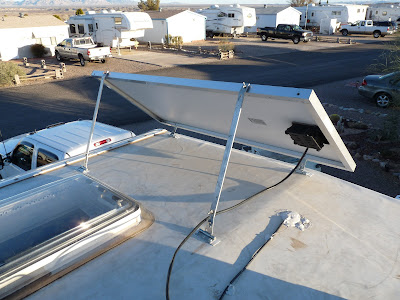If you are a die-hard boondocker, you will be very conservative with power. Small amounts of power loss add up very quickly and are sometimes easy and worthwhile to prevent. Even when turned off, some appliances drain a small amount of "phantom" power from your batteries.
This simple switch from Radio Shack turns off all incoming power to the 12 volt radio, which will be a phantom power draw if you don't do this.
To any boondocker, this is important stuff
Radio off-- But power still on with phantom load
Radio off-- Power off and no load
These Eneloop batteries come pre-charged and hold almost all their power for over one year. They are excellent and can be found in a number of stores, including Costco.
We charge them in the truck while driving down the road or from our solar system when we need to.
This is a common LED used in RV's and replaces the original bulb in many light fixtures.
This one fits in a computer USB port and lights the keyboard while running off the computer battery.


















































